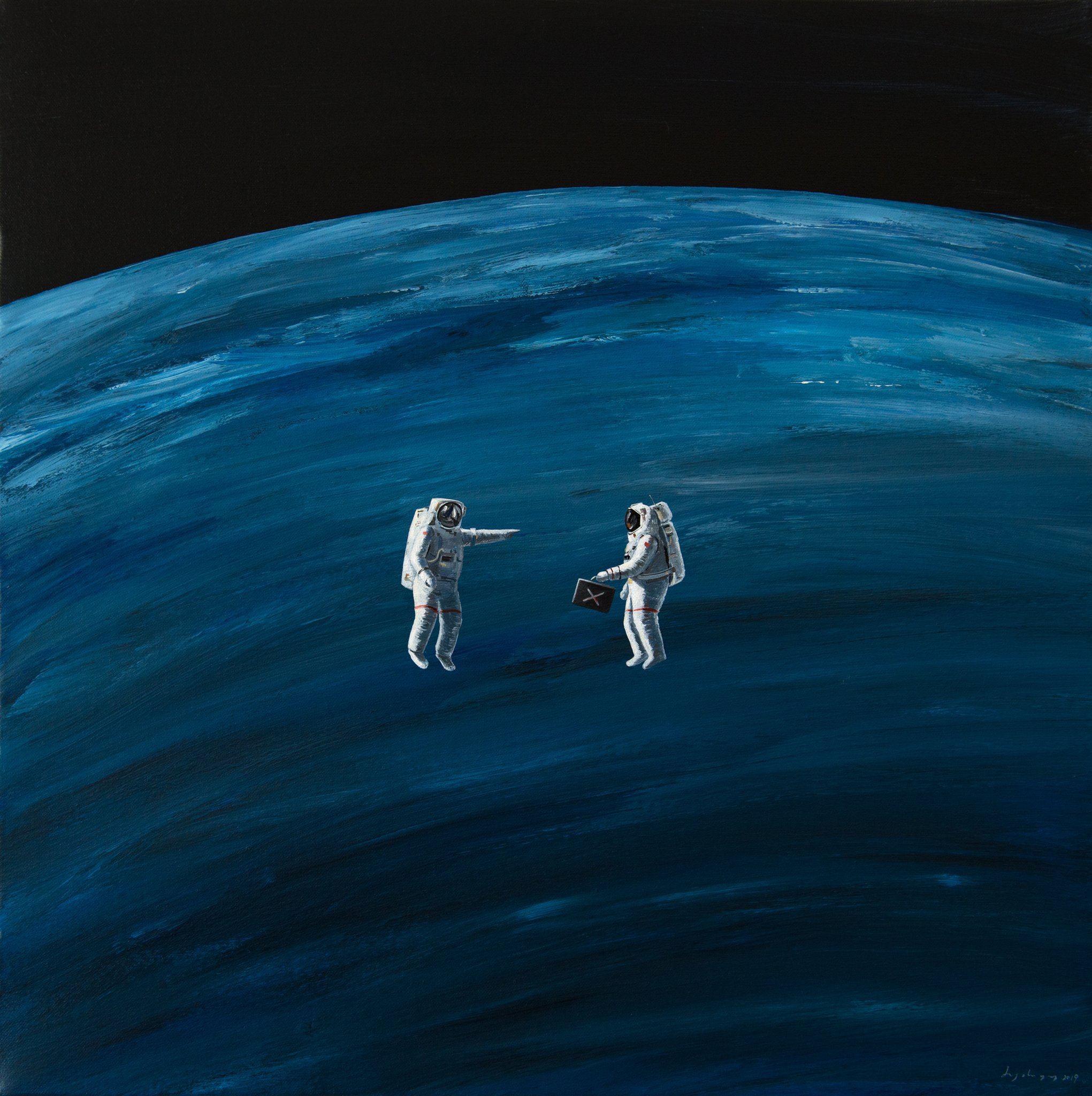Painting Size 80 x 60 cm
2018 - Textile (Textile)
Ali Eyal
Formed from pillowcases, each of which contains an embroidered calligraphic text as well as drawings depicting dreams, Ali Eyal’s Painting Size 80 x 60 cm is part of a long-term project which records and indexes such dreams. “I rode on my cousin’s back, laughing until the heaviness of my body weighed his to the floor. At the time I was with him on their large farm that he always dreamed of visiting. Frightened, he fled from me into his grandfather’s large guest room which was infested with spiders. Spiderwebs covered every corner of the house and framed his grandfather’s forehead,” reads one. The dreams were recorded, preserved, and collected by the artist over the years, then abstracting them into an anti-glossary of sorts; one that is barely legible, but which speaks to and documents grammars of survival amid life-threatening conditions. The work can be equally be engaged with as a performative and humorous exercise in therapeutic release, and as a searing and uncompromising condemnation of the ways in which military violence colonizes the collective psyche. Painting Size 80 x 60 cm was presented as part of MoMA PS1’s “Theater of Operations: The Gulf Wars 1991–2011” group exhibition. When Eyal discovered that an installation shot of his work was used on social media by PS1 to advertise free admission for military veterans on Veterans Day, he produced a new pillowcase work on the “nightmare” of having his art cater to “the ones responsible for the destruction in my country.”
Artist Ali Eyal’s practice aims to explore the complex relationship between community and politics using different media such as video, installation, photography, and painting. Through his work he examines social attitudes specific to the context of Baghdad and Iraq. Eyal’s work situates itself within the tradition of, and as a radical break from, the Iraqi modernist tradition. His process is at once frantic and meditative, blurring distinctions between traditional craftsmanship and contemporary research-based methodologies, thus carving a space in which flickering technical precision is able to merge with hallucinatory, often illegible articulations of collective trauma and injury. Having lived through and witnessed atrocities committed by the US military during its occupation of Iraq, Eyal mobilizes his situated knowledge to lend a voice to and make sense of the effects of a generation brutalized by foreign interference and disoriented by the forced disappearance of their cultural inheritance. In this vein, his film Tonight’s Programme , which debuted at the 2019 Sharjah Film Platform and was screened at the Beirut Art Center and the Rencontres Internationales Paris/Berlin, merges Duke Ellington’s 1963 performance at the Baghdad Khulud Hall with the violent coup Saddam Hussein carried out in the same theatre 16 years later. The work activates a process of mourning and commemorating the premature deaths of those around him who continue to fall prey to interminable cycles of state violence.
Colors:
Related works sharing similar palette
» see more

© » KADIST
Cristóbal Lehyt
2016Cristóbal Lehyt has conducted thorough research on the historical and cultural complexity of the northern region of Chile where the Atacama Desert is located...

© » KADIST
Gao Mingyan
2008The television monitors utilized in the video installation Come On (2008) ostensibly serve as playback devices for a multi-channel installation of clips from blockbuster films as part of a larger commentary of mass entertainment and its relation to consumer cultures...
Related works found in the same semantic group
» see more

© » HYPERALLERGIC
Arthur Tress Sought the Shadow Side of Photography Skip to content Arthur Tress, "Boy with Root Hands, New York, New York" from the series The Dream Collector (1971) (all photos Ksenya Gurshtein/ Hyperallergic ) LOS ANGELES — The earliest recorded evidence of humans’ fascination with dreams dates to antiquity, when Heraclitus wrote, “When men dream, each has his own world...

© » KADIST
Loris Gréaud
2004This work refers to the “Dream Machines”, an experimental object invented by the painter and writer Brion Gysin and the scientist Ian Sommerville, and which is composed of a light bulb with light passing through slits in a rotating cylinder...




